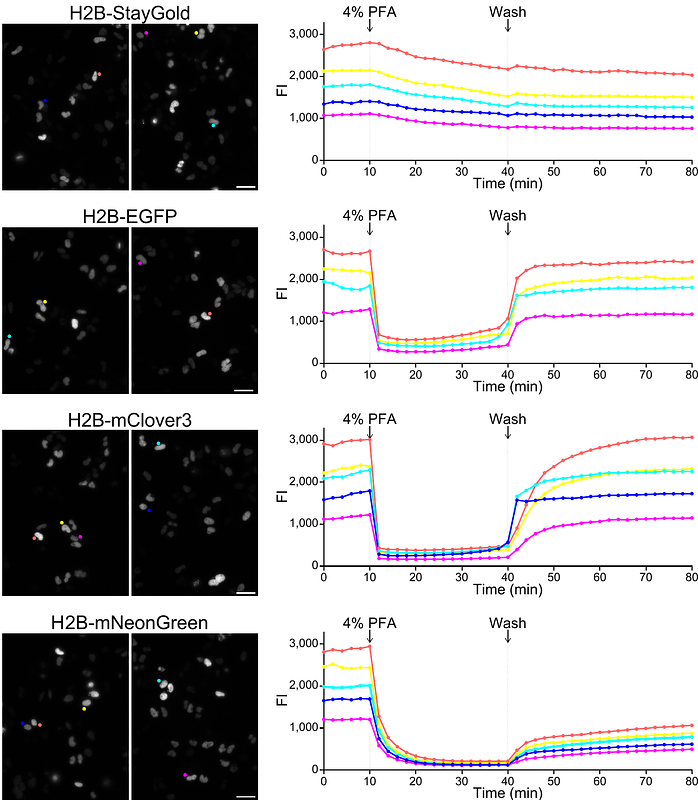StayGold Photostability under Different Illumination Modes

StayGold Photostability under Different Illumination Modes
Hirano, M.; Yonemaru, Y.; Shimozono, S.; Sugiyama, M.; Ando, R.; Okada, Y.; Fujiwara, T.; Miyawaki, A.
AbstractStayGold is a bright fluorescent protein (FP) that is over one order of magnitude more photostable than any of the currently available FPs across the full range of illumination intensities used in widefield microscopy and structured illumination microscopy, the latter of which is a widefield illumination-based technique. To compare the photostability of StayGold under other illumination modes with that of three other green-emitting FPs, namely EGFP, mClover3, and mNeonGreen, we expressed all four FPs as fusions to histone 2B in HeLa cells. Unlike the case of widefield microscopy, the photobleaching behavior of these FPs in laser scanning confocal microscopy (LSCM) is complicated. The outstanding photostability of StayGold observed in multi-beam LSCM was variably attenuated in single-beam LSCM, which produces intermittent and instantaneously strong illumination. We systematically examined the effects of different single-beam LSCM beam-scanning patterns on the photostability of the FPs. This study offers relevant guidelines for researchers who aim to achieve sustainable imaging by resolving problems related to FP photostability.